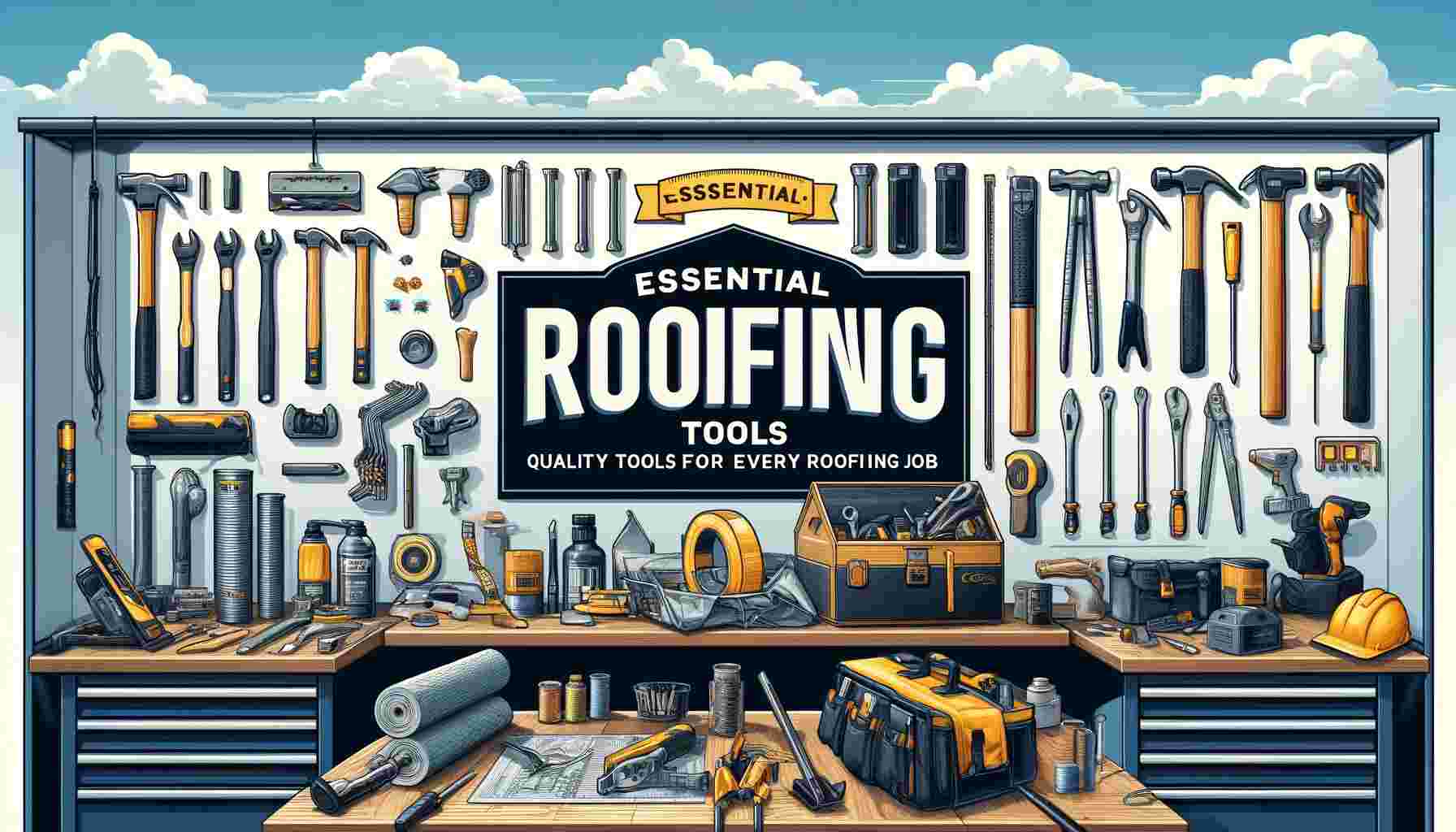Home & Garden
Best Handyman Near Me: Top 10 Picks for Local Home Repairs

When it comes to home repairs and improvements, finding a reliable and skilled handyman can be a daunting task. Homeowners want someone who can handle a variety of tasks, from fixing leaky faucets to installing new light fixtures. With so many options out there, it can be overwhelming to choose the best handyman near me.
Luckily, there are some key factors to consider when searching for a trustworthy handyman. First and foremost, it’s important to look for someone with experience and a proven track record of success. You want someone who has tackled similar projects in the past and can provide references or testimonials from satisfied customers.
Another important factor to consider is pricing. While you don’t want to sacrifice quality for a lower price, it’s important to find a handyman who offers fair and transparent pricing. This means no hidden fees or surprise charges, and a clear breakdown of costs before any work is done. By keeping these factors in mind, homeowners can feel confident in their search for the best handyman near them.
How to Find the Best Handyman
When it comes to finding the best handyman, there are a few things to consider. Here are some tips to help you find the right person for the job.
Understanding Handyman Services
Before you start your search, it’s important to understand what services a handyman can offer. A handyman is a skilled professional who can handle a wide range of tasks, from minor repairs to major renovations. They can help with everything from painting and plumbing to carpentry and electrical work.
Evaluating Handyman Credentials
When looking for a handyman, it’s important to evaluate their credentials. Look for someone who is licensed, insured, and bonded. This will ensure that they have the necessary training and experience to handle the job safely and effectively.
Reading Reviews and Testimonials
One of the best ways to find a reliable handyman is to read reviews and testimonials from previous customers. Look for someone with a track record of quality work and satisfied clients. You can find reviews online on websites like Yelp, Angie’s List, and Google Reviews.
Asking for Recommendations
Another way to find a good handyman is to ask for recommendations from friends, family, and neighbors. They may have worked with a handyman in the past and can give you an honest assessment of their work. You can also ask for referrals from local hardware stores or home improvement centers.
By following these tips, you can find a skilled and reliable handyman to help you with your home improvement needs.
Hiring a Handyman
Requesting Quotes
When looking for the best handyman near you, it’s important to request quotes from multiple candidates. This will allow you to compare prices and services offered. You can either call or email the handyman to request a quote. Be sure to provide a detailed description of the project you need help with, so the handyman can give you an accurate estimate.
Checking Availability
Before finalizing your decision, it’s important to check the handyman’s availability. Make sure the handyman is available to work on your project during the timeframe you need. If the handyman is not available, you may need to consider other candidates.
Discussing Your Project
Once you have narrowed down your list of candidates, it’s important to discuss your project with them. This will give you an opportunity to ask any questions you may have and ensure that the handyman understands the scope of your project. Be clear about your expectations and ask the handyman to provide a timeline for completing the project.
Finalizing the Hire
Before hiring a handyman, make sure to ask for references and check their credentials. You should also ask for a written contract that outlines the scope of work, timeline, and payment schedule. Once you have reviewed and signed the contract, you can finalize the hire and get started on your project.
Home & Garden
Custom Kitchens Toronto: Design Your Dream Kitchen with Expert Help

Custom kitchens are a popular choice for homeowners who want to personalize their living space. In Toronto, there are many options for those looking to create a custom kitchen that meets their unique needs and style preferences. From modern to traditional, there are a variety of designs and materials available to choose from.
One of the benefits of choosing a custom kitchen is the ability to tailor the space to your specific needs. This can include everything from the layout and storage options to the materials and finishes used. Working with a reputable custom kitchen designer in Toronto can help ensure that your vision is brought to life in a functional and aesthetically pleasing way.
Whether you are renovating an existing kitchen or starting from scratch, a custom kitchen can add value to your home and improve your daily living experience. With so many options available in Toronto, it’s important to do your research and work with a professional who can guide you through the process and help you make informed decisions.
Designing Your Custom Kitchen in Toronto
When it comes to designing a custom kitchen in Toronto, there are several factors to consider. From assessing the space and layout to selecting materials and finishes, designing a custom kitchen requires careful planning and attention to detail. Here are some key considerations to keep in mind when designing your custom kitchen in Toronto.
Assessing Space and Layout
The first step in designing a custom kitchen is to assess the available space and layout. This includes measuring the dimensions of the room, identifying any architectural features or obstacles, and determining the best placement for appliances, cabinets, and other elements. It’s important to consider how the kitchen will be used, as well as the flow of traffic and the needs of the household.
Choosing a Style: Modern, Traditional, or Transitional
Once the space and layout have been assessed, the next step is to choose a style for the custom kitchen. Toronto homeowners can choose from a range of styles, including modern, traditional, and transitional. Modern kitchens are characterized by clean lines, minimalist design, and sleek finishes, while traditional kitchens feature ornate details, warm colors, and classic materials. Transitional kitchens blend elements of both styles, offering a timeless and versatile look.
Selecting Materials and Finishes
Selecting the right materials and finishes is essential to creating a custom kitchen that is both functional and beautiful. Toronto homeowners can choose from a wide range of materials, including wood, metal, glass, and stone, as well as a variety of finishes, such as matte, glossy, and textured. It’s important to choose materials and finishes that are durable, easy to clean, and in line with the overall style of the kitchen.
Incorporating Smart Kitchen Technology
Finally, incorporating smart kitchen technology can help to make a custom kitchen even more functional and efficient. Toronto homeowners can choose from a range of smart appliances, such as refrigerators, ovens, and dishwashers, as well as smart lighting, heating, and ventilation systems. These technologies can help to save time and energy, reduce waste, and enhance the overall functionality of the kitchen.
In summary, designing a custom kitchen in Toronto requires careful planning and attention to detail. By assessing the space and layout, choosing a style, selecting materials and finishes, and incorporating smart kitchen technology, homeowners can create a custom kitchen that is both functional and beautiful.
Working with Toronto Kitchen Experts
Finding the Right Designer and Contractor
When it comes to designing and building a custom kitchen, finding the right designer and contractor is crucial. A good designer will work with you to understand your needs and preferences, and create a design that meets both your functional and aesthetic requirements. Similarly, a good contractor will ensure that the design is executed to the highest standards, and that the final product is exactly what you envisioned.
To find the right designer and contractor for your custom kitchen project, it’s important to do your research. Look for professionals who have experience designing and building kitchens similar to the one you have in mind, and who have a track record of delivering high-quality work. You can also ask for referrals from friends and family members who have had custom kitchens Toronto built in the past.
Understanding Local Building Codes
Building a custom kitchen in Toronto requires compliance with local building codes and regulations. These codes are in place to ensure that the kitchen is safe and functional, and that it meets all necessary standards for electrical, plumbing, and ventilation systems.
To ensure compliance with local building codes, it’s important to work with a designer and contractor who have a thorough understanding of these regulations. They should be able to advise you on what is required for your specific project, and ensure that all necessary permits are obtained before construction begins.
Navigating the Permit Process
Obtaining the necessary permits for a custom kitchen project can be a complex and time-consuming process. In Toronto, permits are required for any work that involves structural changes, electrical or plumbing systems, or ventilation systems.
Working with a designer and contractor who are familiar with the permit process can help to streamline the process and ensure that all necessary permits are obtained in a timely manner. This will help to avoid delays and ensure that your custom kitchen project is completed on schedule.
In summary, working with Toronto kitchen experts who have the knowledge and experience to design and build custom kitchens that meet local building codes and regulations is essential to ensuring a successful project. By doing your research, understanding local building codes, and navigating the permit process, you can ensure that your custom kitchen project is completed to the highest standards.
Home & Garden
Home Renovation in Ottawa: Tips and Trends for Your Next Project

Home renovation in Ottawa is a popular topic among homeowners who are looking to upgrade their living spaces. Ottawa is a city with a rich history and diverse architecture, which means that there are many different types of homes that can benefit from renovation. Whether you own a historic home in the Glebe or a modern condo in Centretown, there are many renovation options available to you.
One of the most common reasons for home renovation in Ottawa is to increase the value of a property. With the real estate market in Ottawa remaining strong, many homeowners are choosing to invest in their homes to increase their resale value. Renovations such as kitchen and bathroom upgrades, basement finishing, and outdoor living spaces can all add value to a home. In addition to increasing resale value, home renovations can also improve the functionality and livability of a home, making it a more enjoyable place to live.
Planning Your Home Renovation in Ottawa
Understanding Ottawa’s Renovation Regulations
Before starting a home renovation project in Ottawa, it is important to understand the city’s regulations. The City of Ottawa has specific rules and regulations in place to ensure that all renovations are done safely and in compliance with local building codes. Homeowners should check with the city’s building department to obtain the necessary permits and approvals before starting any renovation work.
The city’s regulations cover a wide range of issues, including electrical and plumbing work, structural changes, and zoning restrictions. Homeowners should be aware of these regulations and ensure that their renovation plans comply with them. Failure to comply with the regulations can result in fines and legal action.
Setting a Realistic Budget
Setting a realistic budget is an important part of planning a home renovation in Ottawa. Homeowners should consider the cost of materials, labor, and any necessary permits or approvals when creating their budget. It is also important to factor in unexpected expenses that may arise during the renovation process.
To avoid overspending, homeowners should prioritize their renovation goals and focus on the most important areas of the home. They should also consider the long-term value of the renovation and how it will impact the resale value of the home.
Choosing the Right Time of Year
Choosing the right time of year to start a home renovation project in Ottawa is crucial. The city’s harsh winters can make it difficult to work on outdoor projects, while the summer months can be busy and expensive. Spring and fall are generally the best times to start a renovation project in Ottawa.
Homeowners should also consider their personal schedules and plan the renovation around their work and family commitments. They should also allow for extra time in case of unexpected delays or complications.
Overall, careful planning and attention to detail are essential when undertaking a home renovation project in Ottawa. By understanding the city’s regulations, setting a realistic budget, and choosing the right time of year, homeowners can ensure a successful and stress-free renovation experience.
Executing the Renovation
Selecting Reputable Contractors
When it comes to executing a home renovation project in Ottawa, selecting a reputable contractor is crucial. Homeowners should do their due diligence and research potential contractors thoroughly before making a final decision. This includes checking their credentials, licenses, and reviews from previous clients.
Homeowners can also ask for referrals from friends or family members who have recently completed a renovation project. It is important to obtain multiple quotes from different contractors and compare them to ensure that the pricing is fair and reasonable.
Design and Architecture Considerations
Before beginning a home renovation project in Ottawa, it is essential to consider the design and architecture of the home. Homeowners should work with an experienced architect or designer to ensure that the renovation plans meet their needs and are in compliance with local building codes and regulations.
The design and architecture of the renovation should also take into account the overall aesthetic of the home, as well as any potential resale value. Homeowners should consider factors such as the size and layout of the home, the style of the existing architecture, and the functionality of the space.
Material Procurement and Sustainability
When executing a home renovation project in Ottawa, homeowners should also consider the procurement of materials and their sustainability. It is important to choose materials that are durable, high-quality, and eco-friendly.
Homeowners should research and compare different materials, such as flooring, countertops, and cabinetry, to find options that meet their needs and budget. They should also consider the environmental impact of the materials and choose those that are sustainable and have minimal impact on the environment.
By selecting reputable contractors, considering design and architecture, and choosing sustainable materials, homeowners can execute a successful home renovation project in Ottawa that meets their needs and exceeds their expectations.
Home & Garden
Splitting Wedge: The Ultimate Guide to Choosing and Using One

A splitting wedge is a tool that is used to split logs into smaller pieces of wood. It is a wedge-shaped tool that is made of metal and is designed to be driven into the end of a log using a sledgehammer or maul. Once the wedge is driven into the log, it creates a split in the wood that allows it to be easily broken apart into smaller pieces.
Splitting wedges are commonly used by homeowners who need to split firewood for their homes. They are also used by professional loggers who need to process large amounts of wood quickly and efficiently. Splitting wedges come in a variety of sizes and shapes, and the type of wedge that is used depends on the size and type of wood that is being split. Some wedges are designed to be used with larger logs, while others are designed to be used with smaller pieces of wood.
Fundamentals of Splitting Wedges
Design and Shape
Splitting wedges come in a variety of designs and shapes. The most common design is the traditional wedge shape, which is wider at the top and tapers down to a point at the bottom. This design allows the wedge to penetrate the wood easily and split it apart.
Another popular design is the diamond-shaped wedge, which has a wider top and bottom and tapers in the middle. This design is ideal for splitting larger logs as it provides more surface area for the wood to split against.
The shape of the wedge is also important. A wedge with a flat top will create a wider split, while a wedge with a pointed top will create a narrower split. The angle of the wedge is also important, as a steeper angle will require more force to split the wood, while a shallower angle will require less force.
Material Composition
Splitting wedges are typically made from high-quality steel, which is durable and resistant to wear and tear. Some wedges are coated with a non-stick material, such as Teflon, to make them easier to remove from the wood.
Some wedges are also made from composite materials, such as fiberglass or plastic. These materials are lightweight and easy to handle, making them ideal for splitting small logs or kindling.
In conclusion, when selecting a splitting wedge, it is important to consider the design and shape, as well as the material composition. A well-designed and well-made splitting wedge will make the task of splitting wood easier and more efficient.
Usage and Application
Wood Splitting Techniques
Splitting wood is an essential task for anyone who needs firewood or wants to use wood for construction purposes. A splitting wedge is a tool that is used to split wood into smaller pieces. There are various techniques that can be used to split wood using a splitting wedge.
One of the most common techniques is the “wedge and maul” method. This involves placing the splitting wedge into a crack or split in the wood and then using a maul or sledgehammer to drive the wedge deeper into the wood. The force of the maul will split the wood along the grain.
Another technique is the “hammer and chisel” method. This involves using a chisel and hammer to make a small cut or groove in the wood. The splitting wedge is then placed into the groove and struck with a hammer to split the wood.
Safety Precautions
Using a splitting wedge can be dangerous if proper safety precautions are not taken. Here are some safety tips to keep in mind:
- Always wear eye protection when using a splitting wedge.
- Make sure the wood is stable and secure before attempting to split it.
- Keep your hands and feet away from the splitting wedge while it is in use.
- Use a maul or sledgehammer with a non-slip grip to avoid slipping and injuring yourself.
- Never use a splitting wedge that is damaged or worn.
- Always strike the splitting wedge with a hammer or maul straight on, not at an angle.
By following these safety tips and using proper wood splitting techniques, you can safely and efficiently split wood using a splitting wedge.
-

 Tech9 months ago
Tech9 months agoExpotab.com Login: How to Access Your Account Easily
-

 Automobile9 months ago
Automobile9 months agoModyukle: Understanding the Basics and Benefits
-

 Tech9 months ago
Tech9 months agoNetWyman Blogs: The Ultimate Guide to Building a Successful Blogging Career
-

 Tech9 months ago
Tech9 months agoAcumatica Partner: A Guide to Choosing the Right One for Your Business
-

 Tech7 months ago
Tech7 months agoMultimedia Content Development Company in India: Services and Expertise
-

 Health9 months ago
Health9 months agoSkin Care in Hindi: The Ultimate Guide to WellHealthOrganic Products
-

 Blog9 months ago
Blog9 months agoAndre Hakkak Net Worth: A Look at the Wealth of the Successful Entrepreneur
-

 Blog9 months ago
Blog9 months agoJack Doherty Net Worth: How Much is the Entrepreneur Worth





